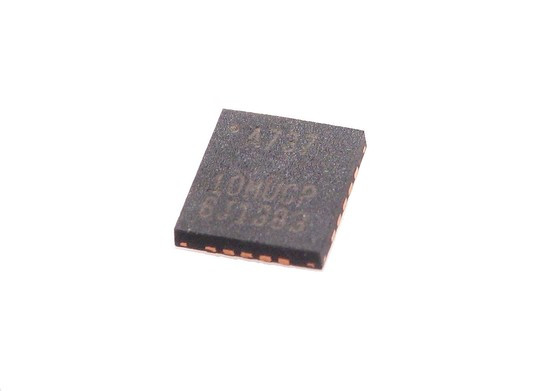ATTINY13-20MU
| Manufacturer: | MICROCHIP |
| Architecture: | 8-bit |
| FLASH memory: | 1kB |
| RAM memory: | 64B |
| EEPROM memory: | 64B |
| Number of I/O: | 6 |
| Supply voltage range: | 2,7V~5,5V |
| Quantity of pcs. | 1+ | 5+ | 25+ | 100+ | 200+ |
|---|---|---|---|---|---|
| Net price (EUR) | 2,5069 | 2,0635 | 1,8796 | 1,8088 | 1,7900 |
| Manufacturer: | MICROCHIP |
| Architecture: | 8-bit |
| FLASH memory: | 1kB |
| RAM memory: | 64B |
| EEPROM memory: | 64B |
| Number of I/O: | 6 |
| Supply voltage range: | 2,7V~5,5V |
| Frequency: | 20,000MHz |
| ADC: | YES |
| DAC: | NO |
| UART/USART interface: | NO |
| SPI interface: | NO |
| TWI (I2C) interface: | NO |
| CAN interface: | NO |
| ETHERNET interface: | NO |
| USB interface: | NO |
| Encryption: | NO |
| Operating temperature (range): | -40°C ~ 85°C |
| Case: | MLF20 |
Manufacturer: Atmel
Family: Embedded – Microcontrollers
Series: AVR® ATtiny
Processor: AVR
Architecture: 8-Bit
Frequency: 20MHz
Peripherals: Brown-out Detect/Reset, POR, PWM, WDT
Number of I/O Pins: 6
Memory Capacity: 1KB (512 x 16)
Memory Type: FLASH
RAM Capacity: 64 x 8
Operating Voltage: 2.7 V ~ 5.5 V
Oscillator Type: Internal
Operating Temperature: -40°C ~ 85°C
Package: MLF20
The AVR core combines a rich instruction set with 32 general-purpose working registers. All registers are directly connected to the arithmetic-logic unit (ALU), enabling access to two independent registers within a single instruction, executed in one clock cycle. This architecture allows for the creation of efficient code executed up to ten times faster than traditional CISC microcontrollers.
The ATtiny13 microcontroller offers 1 kB of Flash memory, which can also be programmed in the device after installation, 64 bytes of EEPROM memory, 64 bytes of SRAM, 6 general-purpose I/O lines, 32 general-purpose working registers, one 8-bit timer/counter with comparison modes, support for internal and external interrupts, a 4-channel, 10-bit ADC, a programmable Watchdog with its own built-in oscillator, and three power-saving modes that can be selected via software. In the idle mode, the CPU is stopped, but SRAM, the timer/counter, ADC, analog comparator, and the interrupt system still work. The shutdown mode retains register states, while all system functions are turned off until the next interrupt or hardware reset. The noise reduction mode for ADC measurements stops the CPU and all I/O modules except the ADC to minimize noise during ADC conversion.
The device is manufactured using Atmel’s high-density non-volatile memory technology. The built-in Flash memory allows the device to be reprogrammed in the final product via the SPI serial interface. You can also use a bootloader or a traditional non-volatile memory programmer.
A full suite of development tools is available for the ATtiny13 microcontroller, including C compilers, macro assemblers, debuggers, simulators, and development kits.

